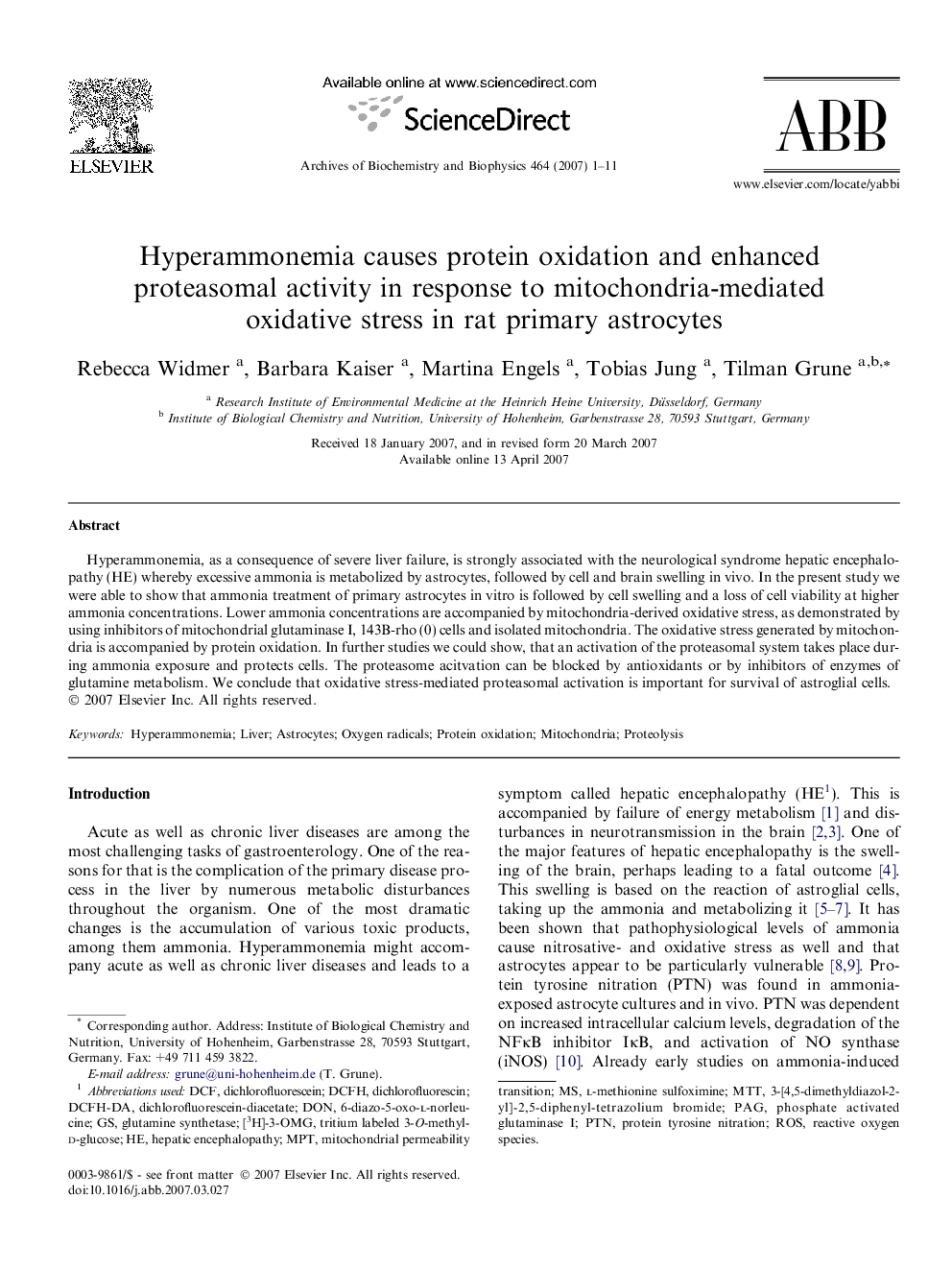| Article ID | Journal | Published Year | Pages | File Type |
|---|---|---|---|---|
| 1926975 | Archives of Biochemistry and Biophysics | 2007 | 11 Pages |
Hyperammonemia, as a consequence of severe liver failure, is strongly associated with the neurological syndrome hepatic encephalopathy (HE) whereby excessive ammonia is metabolized by astrocytes, followed by cell and brain swelling in vivo. In the present study we were able to show that ammonia treatment of primary astrocytes in vitro is followed by cell swelling and a loss of cell viability at higher ammonia concentrations. Lower ammonia concentrations are accompanied by mitochondria-derived oxidative stress, as demonstrated by using inhibitors of mitochondrial glutaminase I, 143B-rho (0) cells and isolated mitochondria. The oxidative stress generated by mitochondria is accompanied by protein oxidation. In further studies we could show, that an activation of the proteasomal system takes place during ammonia exposure and protects cells. The proteasome acitvation can be blocked by antioxidants or by inhibitors of enzymes of glutamine metabolism. We conclude that oxidative stress-mediated proteasomal activation is important for survival of astroglial cells.
